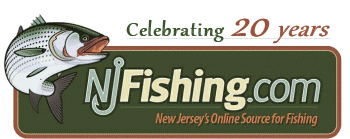Originally Posted by bulletbob

Here's how I "survey"a boat 17 foot glass boat.. Look it over.. Are the floors hard and not waterlogged?. Transom as well?.. no flexing, no cracks? no soggy wood?.. Everything look solid, and all electricals in working order??.. yes?.... Well then take it out a few times in nearshore bays, tidal rivers etc.. Any water come out of the drain plug at the ramp after takeout? ?.. A few gallons is ok,, If its running out heavy and looks substantial each time out, the gelcoat is porous or cracked somewhere.,,, If it performs well, take a trip or two out the inlet close in first few times when the weather is right...The boat will tell you all you need to know in short order after a few trips.. Unless it was badly abused, or in an accident, a decent 17 foot glass hull is usually trouble free, with the main problem spots being floors and transom.. if they are solid, and the boat doesn't get a lot of water, there is very little to worry about.. FIRST thing I would do with any 17 no matter how good it looks, is have backup power.. Get a good running 9.9 on a bracket on the boat. That, a good VHF radio, and you should be fine to go out within sight of land.. Personally, I would never go out even on the bay without backup power.. You an get a tow in of course, but in my day, I have seen guys stranded, desperate ,with no power, or boats filling with water, and guys nearby in sea worthy boats that were too interested in their fluke drifts to bother to help.. I have towed a lot of stranded boaters back to the ramp in my time... ANY recreational fishing boat that goes in the ocean needs backup power in my opinion.. As far as the glass hull, if it looks and sounds solid, doesn't leak water, it usually just fine.. I have seen very very few "bad" glass hulls, unless they were damaged.. Transoms are your main concern.. Look for cracks where the transom joins the body, and pull on the motor to check for flexing.. Its only my opinion, but paying to survey a 17 bay boat? I wouldn't. Take it out a few times and it will tell you all you need to know... bob
|










